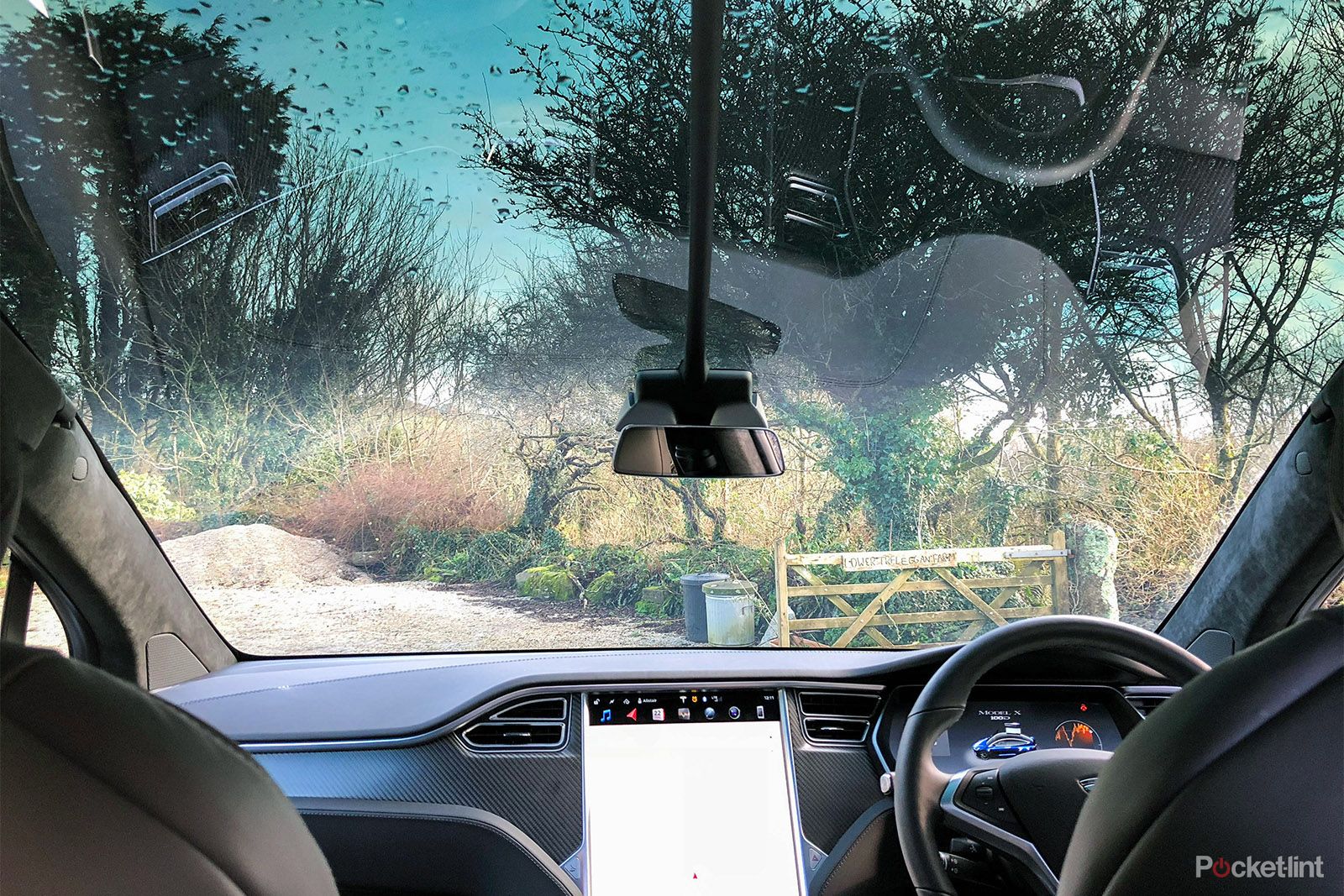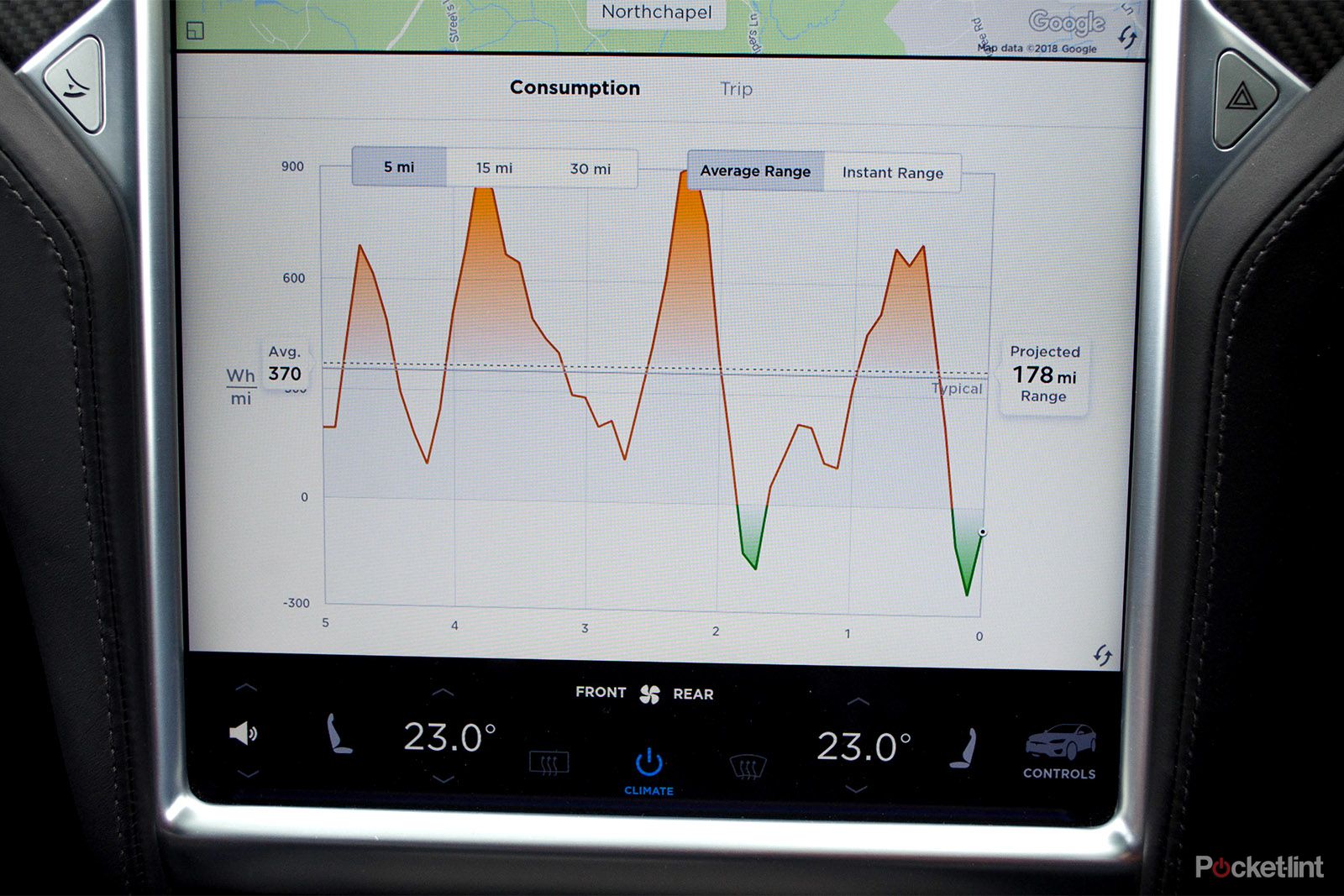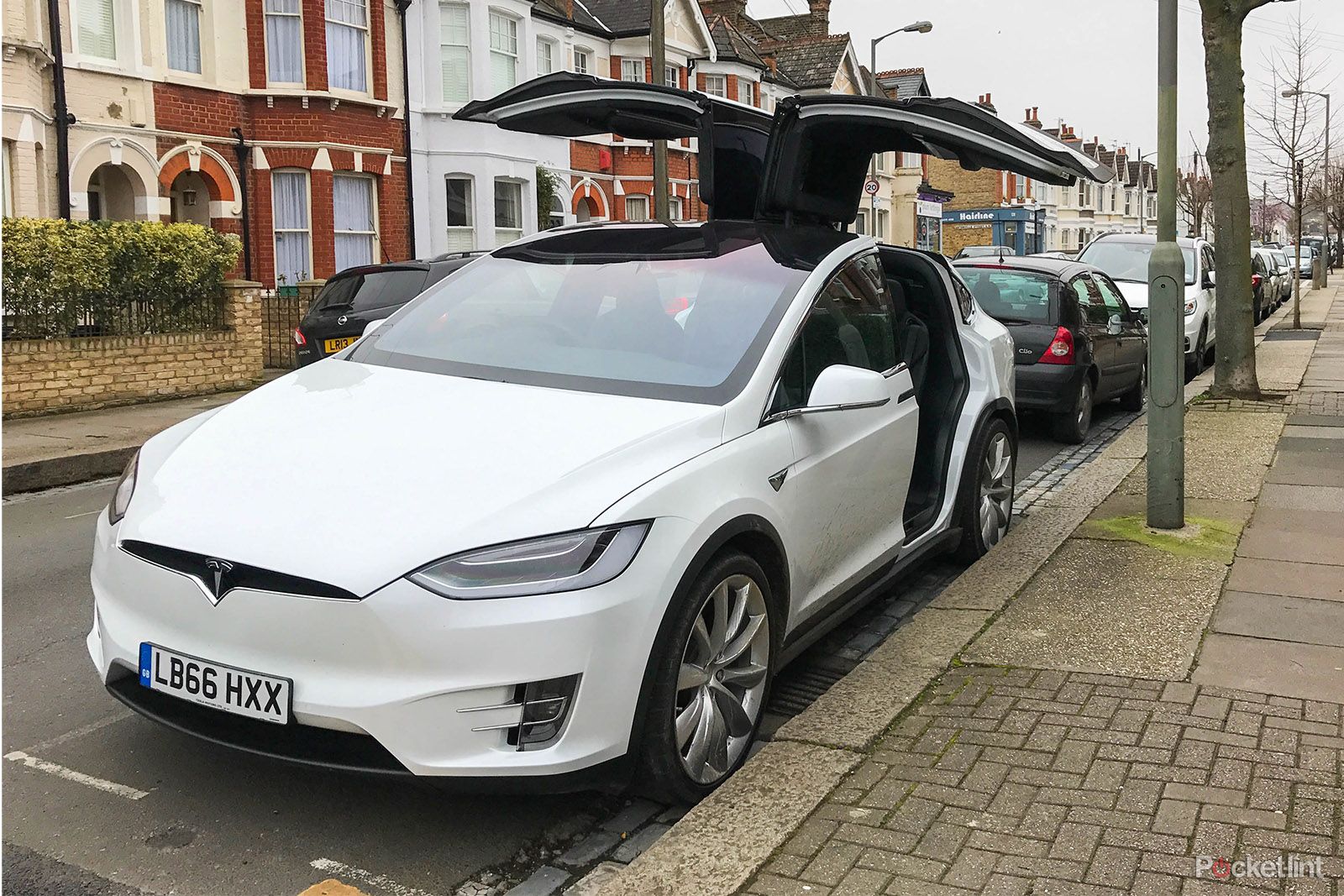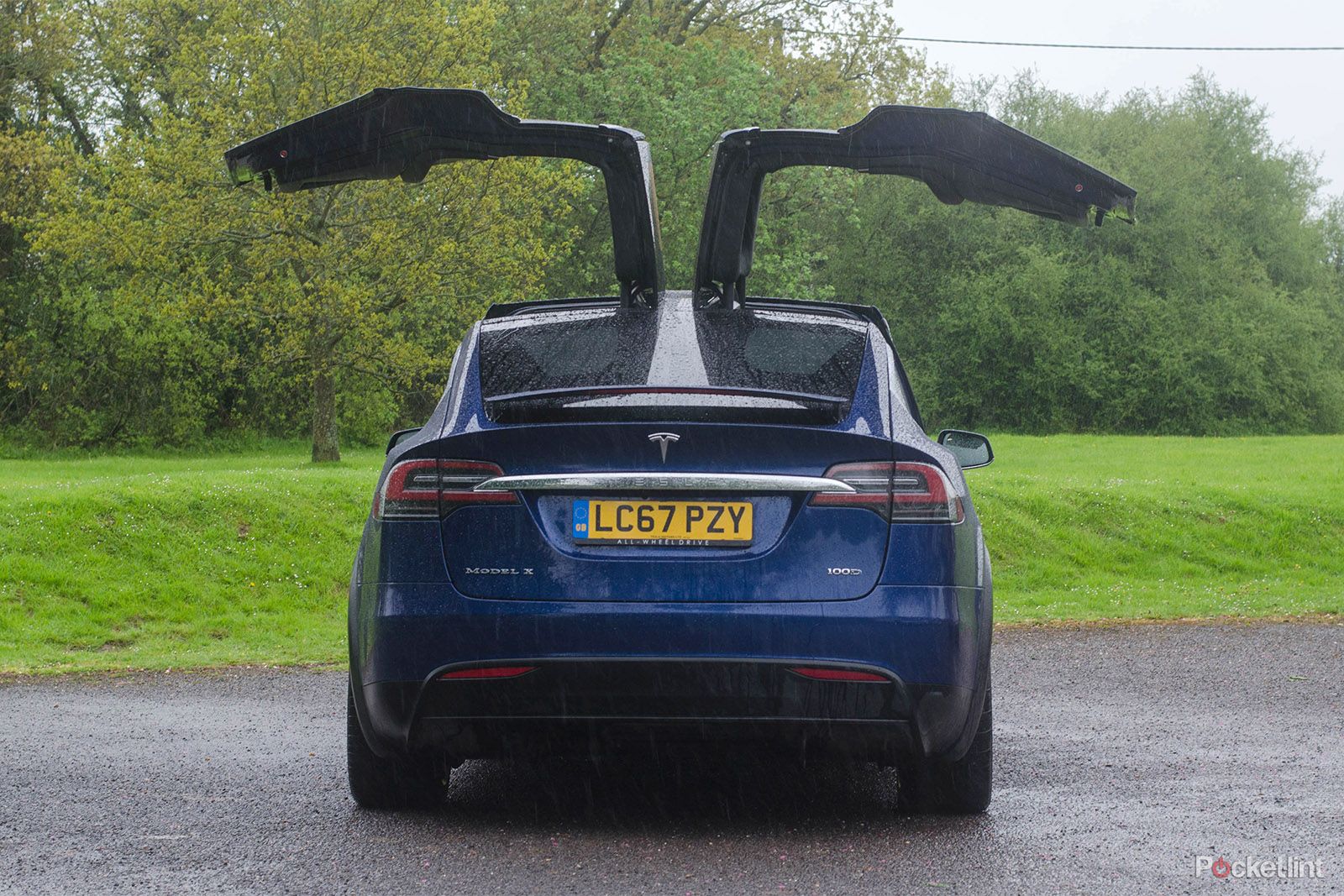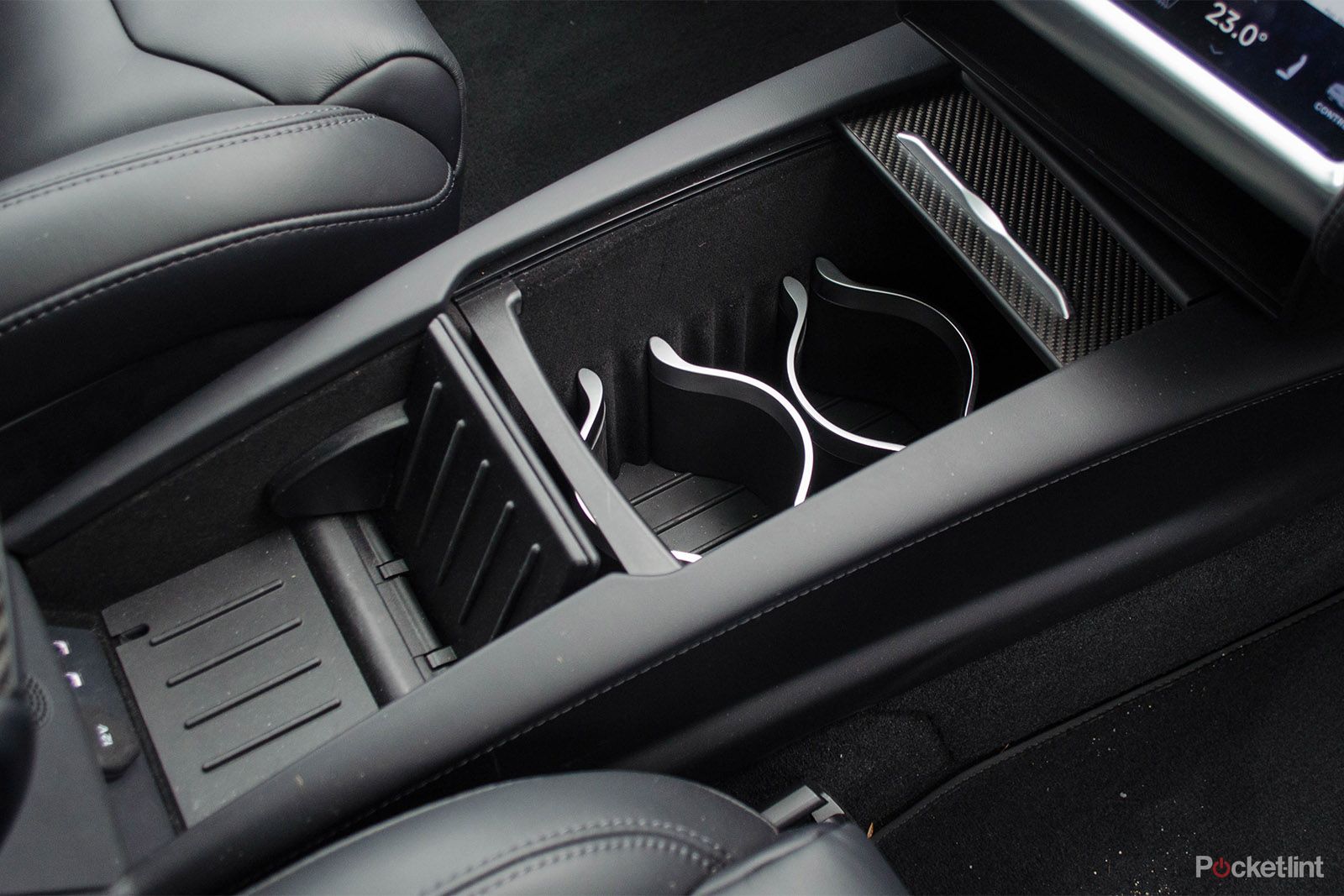With all eyes on the difficult birth of the Tesla Model 3 - a mass-market electric car mentioned by some in the same breath as the Ford Model T and Mini - we shouldn't lose sight of Elon Musk's more premium offerings. There's already the Model S - which we drove to the Scottish Highlands in late-2017 - which proves that, yes, taking an electric vehicle (EV) so far is a perfectly reasonable thing to do.
Our quick take
The Tesla Model X is a car of great contrast. On one hand, it must be congratulated for bringing the future slightly closer. Its electric drivetrain and charging network is exceptional and its performance is out of this world.
But sometimes it is a car that tries too hard. The falcon-wing doors are fiddly in tight spaces; the cabin lacks stowage; it fails to offer the kind of six-figure luxury that buyers at this level will expect.
In many respects the Model X is the car to help fast-forward the widespread adoption of electric cars. Almost three years since production began, the Model X still looks and feels like an alien spaceship.
So it isn't perfect, but for families with the budget to spend and the desire to make the switch to electric, the big X can enjoy the market all to itself... for now.
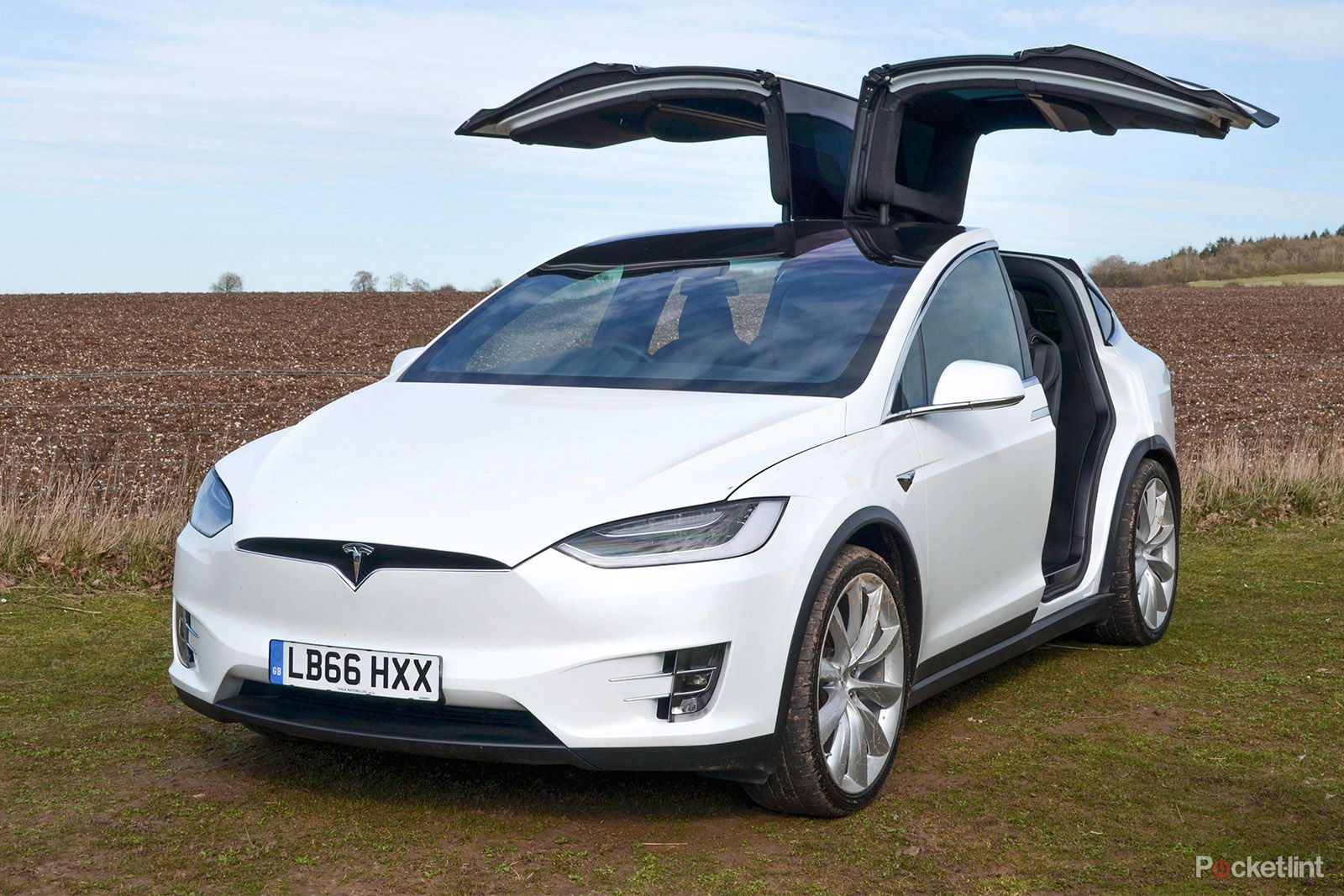
Tesla Model X - 4.0 / 5
| FOR | AGAINST |
|---|---|
|
|
And now there's the Model X. Sharing the same chassis as the Model S saloon, the X is an all-electric SUV with an electric motor driving each axel and a huge battery in its floor. Its mission statement is very similar to that of the Model S: a fully electric, ludicrously powerful luxury car with a long range, nationwide fast-charging network, and more high-tech gimmicks than you can shake a Silicon Valley hipster at.
Keeping it in the family
As we said above, the Model S and X share the same chassis, motors and battery. But more than that, they also share similar exterior styling and a near-identical interior - at least as far as the dashboard, centre console, instrument binnacle, displays and all controls are concerned. Although you step across and into the taller X, instead of down and into the S, the view ahead from the driver's seat is almost identical in both cars.
That means Model X drivers are treated to the same huge 17-inch touchscreen, which completely dominates the dashboard. It's like something from a spaceship and controls almost everything. There are permanent virtual buttons at the bottom of the screen for the climate control, media volume, seat warmers and heated screens, while a tap of the Controls icon opens up pages of settings for adjusting the lights, wipers and much more besides.
Up top is where you find access to the car's various applications, including navigation, media playback (including Spotify via the car's own permanent internet connection), a web browser, reversing camera, and screens for checking your electricity usage.
Training your muscle memory
At the very top of the screen is where you can unlock the Model X's various party tricks. There's a drawing app which lets you doodle on the screen (while safely parked, naturally). There is also a way to load up satellite images of Mars on the sat-nav, just in case you got bored of Earth.
There's even a party mode, where, after you next park up and lock the car, it plays loud music while flashing its lights and raising its falcon-wing doors to the beat. Yes, really. Just don't try it in a multi-storey carpark.
There's a lot to learn here, but if you spend a few minutes working through the screens logically and reading everything before you start driving, it all makes perfect sense. That is, it makes sense while parked, or if you're using the infotainment as a passenger.
However, for driver - especially an unfamiliar one who has picked up the Model X press car in London and is headed many hours down the road to Cornwall - the user interface can be distracting. We've spent quite some time in Tesla's cars over the years, but even doing something simple like adjusting the climate or switching on the brilliantly named Biohazard Defence Mode (an extreme and quite noisy air filtering mode) takes our eyes off the road for a beat longer than feels comfortable.
Simple actions like skipping music tracks, adjusting the volume and altering the cabin temperature can be done with buttons and two scrollers on the steering wheel, but this isn't a perfect solution. For example, if you want to switch the headlights to manual or disable the occasionally-troublesome auto high beam dip then you need to jump into the Controls menu of the touchscreen. A conventional, physical dial or stalk would feel safer.
We have no doubt that muscle memory would eventually make accessing the Model X's common controls far easier, but only after a long weekend and 600 miles with the car did we feel more confident with the touchscreen setup.
It's all about those doors
A control screen that's unique to Model X's user interface controls one of the car's biggest features: its doors.
The front doors can be set to open when you approach them; get within half a step of the B-pillar and the door springs open. It's quite alarming at first, especially when the big X is squeezed into a parking space with cars either side, but it knows not to open too far. We quickly got used to how the doors close when you step on the brake pedal, which is also how you switch on a Tesla.
"But what about the crazy back doors?" we hear you cry. Called falcon-wing doors, they lift up and out in the most futuristic way imaginable. They are huge, almost intimidatingly so, and have a slight whiff of trying too hard about them. And no, they don't like opening in tight spaces.
These falcon-wing doors are clever enough not to smash into nearby cars, children or concrete posts, and if they're being too conservative you can manually control them with a press of the key fob. Doing so then saves the given position, so the car knows exactly how far to open its doors when parked in that exact location - useful if you take regular family trips to the same shopping centre and its tight car park.
There's no getting away from the occasional inconveniences presented by the falcon-wing doors. We opened them while parked on a residential London street and passing traffic wasn't sure if there was space to get by. There was, of course, but when open they sit within a section of our peripheral view which isn't accustomed to horizontal car doors. It makes us a little unsure of how much space they are really taking up, and this same effect is felt when you park the Model X but forget to take into account if rear passengers will be able to get out.
But when there is space, the falcon-wing doors make perfect sense. Middle row passengers simply step aboard, while parents can place child seats in with ease, all while the door acts as a rain shelter (which was much needed when taking photographs of the car for this review).
The doors also make entry into the smaller third row easier than in other six- or seven-seaters. With the press of a button (not the tap of a screen, for once) the middle row quickly slides and leans forward to make space. Passengers over six-foot tall won't enjoy a full day in the back row, but it's perfectly acceptable for most journeys - and thanks to glass panels in the roof and small windows by the C-pillars, every seat is flooded with light.
Stand-out features aplenty
One of our favourite aspects of the Model X is the optional six-seat layout, instead of five or seven. Here, the second row has two individual seats with what resembles a small gangway between them. As you take a seat and hear the door lock shut to your side, it feels like you are aboard the world's smallest private jet.
Step into the front and you are almost surrounded by the enormous panoramic windscreen. It is simply massive, stretching from the bonnet to behind your head in one smooth arc. The sun visors are small and fiddly to operate while driving, but thankfully the glass is tinted on a gradation - so they rarely need to be unfolded anyway. The windscreen is possibly our favourite feature of the X, it really is that good.
Also high on the list of plus points is the Model X's front and rear boot spaces. Admittedly, the rear is mostly full up due to the rear seats, but even with six or seven adults on board there is space for several soft bags or a couple of small suitcases in the back, plus a week's worth of food shopping or two/three soft weekend bags in the front.
Driving long distances and the Supercharger network
We borrowed the Model X to drive to Tesla's southern-most UK Supercharger, at Lifton, on the border of Devon and Cornwall. Our final destination was actually another 30 miles away, near Helston in the south-west corner of Cornwall.
As we discussed in our review of the Model S, where we drove to Tesla's northern-most charger, in the Scottish Highlands, driving long distances in these cars is remarkably simple - just put the postcode into the navigation system and charge the car when the system instructs. There's no backup fuel tank to be found here.
Keeping an eye on the car's estimate for miles of range left to your destination (or next charging stop) is all you need to do. If this figure drops below what you are comfortable with (say 20ish miles to be on the safe side), then slow down a little. The system is remarkably accurate, even over long distances.
The Lifton charger is at the Arundell Arms Hotel, where Tesla drivers are invited to stop and have lunch in the bar or relax in the lounge (complete with open fire) while the car charges. It's a lovely location, just off the main road, and yet feels a million miles away from the dingy roadside services other drivers have to endure.
Superchargers can deliver enough range into the battery to cater for up to around 300 miles (per hour at the electric "pump") although this slows as the battery fills up, and is slower if the charger next to yours is also being used.
We haven't discussed numbers yet because as electric cars get more capable, analysing range estimates is becoming less and less necessary. We left London in the morning with the battery almost full, then stopped for breakfast and lunch, using a Supercharger each time. We arrived in Helston 300 miles later with around 30 per cent battery remaning, which was plenty to get us around for a weekend and - after plugging into a regular mains plug for an afternoon, just to be on the safe side - returned to London via Lifton without breaking a sweat.
For what it's worth, Tesla claims the entry-level Model X 75D can cover 259 miles on a charge, according to the New European Driving Cycle (which ironically is about to be replaced with a new measuring system). The 100D is rated at 351 miles, while the insanely fast P100D (0-60mph in just three seconds, anyone?) manages 336 miles. But this is like stating the miles-per-gallon figure of a petrol or diesel car: in the real world, your mileage varies. Batteries in electric cars are affected by cold weather; plus the geography of the road and the way you drive will affect range. So knock 15-20 per cent off the quoted figures and that'll be about right.
Outrageous speed for an SUV
As you can probably guess, sharing the Model S powertrain means the Model X can achieve very similar performance figures.
Tesla claims 0-60mph takes 4.9 seconds in the Model X 75D, 4.7 seconds in the 100D, and a staggering 2.9 seconds in the P100D (which also launches from 45 to 65mph in 1.4 seconds). However you look at them, these figures are thoroughly outrageous for any car, nevermind a family SUV.
While the heavy battery pack remains in the floor, giving the Model X a far lower centre of gravity than its petrol- and diesel-drinking rivals, the tall and heavy X exhibits slightly more roll when put through the corners than the Model S. But it's still a properly amusing car to drive quickly, with sport mode offering firm and assertive steering and the all-wheel-drive system dealing well with the masses of power on offer.
As with other electric cars, the X can be driven mostly with just the accelerator because the regenerative braking system harvests kinetic energy into the battery when you lift off the accelerator. Lift rapidly and the car slows abruptly, lift a little and it will slow gradually. After a day you will find you can exit the motorway and slow to walking pace at the roundabout without touching the brake pedal.
Or let the car drive itself with Autopilot
A couple of years ago, Autopilot - which takes control of the accelerator, steering and brakes - was almost treated as witchcraft. But as other car makers begin to catch up, Tesla's advanced driver assistant system is now starting to feel normal.
The car keeps a safe distance from the vehicle in front, will keep to the maximum speed you select when there is space ahead to do so, and will keep in its lane on the motorway and dual-carriageways. Autopilot can also switch lanes when you flick the indicator stalk, and the system will drive the car during stop-start traffic.
The law currently requires drivers to keep their hands on the wheel at all times, as they are still ultimately in control of the vehicle. As such, a Tesla will issue visual then audible prompts if the car senses that you have let go of the wheel for more than a few seconds.
The Autopilot interface is reassuringly clean and simple, making it clear when the car is driving and when it isn't (like when lane markings disappear and there isn't a vehicle ahead to follow).
A practical family car? Yes and no
Middle and rear seat access is perfect for families with young children, and the Tesla's many gimmicks will no doubt impress younger members of the family. But we're not sure how entertained children would be on a family road trip.
Despite being the size of a Range Rover, there is precious little stowage space in the Model X. There's none in the seatbacks, none in the rear doors (obviously, because everything would fall out), none between the two middle seats, and very little in the front centre console. When the Land Rover Discovery offers concealed storage for five iPads in one place and four in another, the Tesla's offering - a car from Silicon Valley, don't forget - is disappointing.
Everyone gets a cup holder, though. The driver and front passenger get space for an additional larger bottle each, too. But that's about it. A small stowage bin contains two USB ports, but it isn't large enough to close with a smartphone inside it. Leave the large bottles at home and that space is big enough for sunglasses, wallets, phones and the like, but the integrated bottle holders make the space far from ideal. A small shelf below the touchscreen is acceptable for phones, but we'd worry about the Tesla's famous acceleration causing anything in there to fly out.
To recap
Falcon-wing doors, a huge panoramic windscreen, supernatural power and a whole catalogue of party tricks make the Model X look and feel like it has just landed from Mars. But while its EV tech continues to impress, Tesla still has some lessons to learn when pitching at the luxury family sector.

